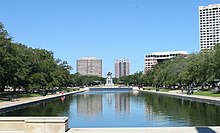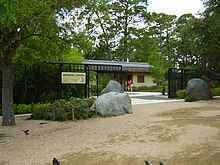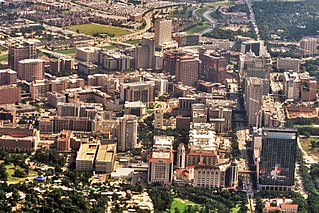
The Texas Medical Center (TMC) is a neighborhood in south-central Houston, Texas, United States. It is immediately south of the Museum District and west of Texas State Highway 288.
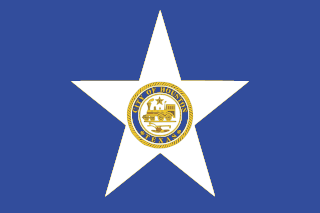
The city of Houston in the U.S. state of Texas was founded in 1837 after Augustus and John Allen had acquired land to establish a new town at the junction of Buffalo and White Oak bayous in 1836. Houston served as the temporary capital of the Republic of Texas. Meanwhile, the town developed as a regional transportation and commercial hub. Houston was part of an independent nation until 1846 when the United States formally annexed Texas. Railroad development began in the late 1850s but ceased during the American Civil War. Houston served the Confederacy as a regional military logistics center. The population increased during the war and blockade runners used the town as a center for their operations.

Downtown is the largest central business district in the city of Houston and the largest in the state of Texas, located near the geographic center of the metropolitan area at the confluence of Interstate 10, Interstate 45, and Interstate 69. The 1.84-square-mile (4.8 km2) district, enclosed by the aforementioned highways, contains the original townsite of Houston at the confluence of Buffalo Bayou and White Oak Bayou, a point known as Allen's Landing. Downtown has been the city's preeminent commercial district since its founding in 1836.

The Houston Museum District is an association of 21 museums, cultural centers and community organizations located in Houston, Texas, dedicated to promoting art, science, history, and culture.
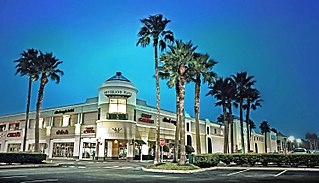
Meyerland is a community in southwest Houston, Texas, outside of the 610 Loop and inside Beltway 8. The neighborhood is named after the Meyer family, who bought and owned 6,000 acres (24 km2) of land in southwest Houston.

Memorial Park, a municipal park in Houston, Texas, is one of the largest urban parks in the United States. Opened 101 years ago in 1924, the park covers approximately 1,466 acres (5.9 km2) mostly inside the 610 Loop, across from the neighborhood of Memorial. Memorial Drive runs through the park, heading east to downtown Houston and west to the 610 Loop. A small portion of land west of the 610 Loop bordered by Woodway Drive and Buffalo Bayou is also part of the park. I-10/U.S. 90 borders the park to the north. The park was originally designed by landscape architects Hare & Hare of Kansas City, Missouri. In 2016, the operation of the park was transitioned from the Houston Parks and Recreation Department to the Memorial Park Conservancy, a private non-profit organization with a mission to "restore, preserve and enhance Memorial Park."

Overton Park is a large, 342-acre (138 ha) public park in Midtown Memphis, Tennessee. The park grounds contain the Memphis Brooks Museum of Art, Memphis Zoo, a 9-hole golf course, the Memphis College of Art, Rainbow Lake, Veterans Plaza, the Greensward, and other features. The Old Forest Arboretum of Overton Park, one of the few remaining old growth forests in Tennessee, is a natural arboretum with labeled trees along trails.

Houston, the most populous city in the Southern United States, is located along the upper Texas Gulf Coast, approximately 50 miles (80 km) northwest of the Gulf of Mexico at Galveston. The city, which is the ninth-largest in the United States by area, covers 601.7 square miles (1,558 km2), of which 579.4 square miles (1,501 km2), or 96.3%, is land and 22.3 square miles (58 km2), or 3.7%, is water.

Joseph Stephen Cullinan was a U.S. oil industrialist. Although he was a native of Pennsylvania, his lifetime business endeavors would help shape the early phase of the oil industry in Texas. He founded The Texas Company, which would eventually be known as Texaco Incorporated.

Discovery Green is an 11.78-acre (47,700 m2) public urban park in Downtown Houston, Texas, bounded by La Branch Street to the west, McKinney Street to the north, Avenida de las Americas to the east, and Lamar Street to the south. The park is adjacent to the George R. Brown Convention Center and Avenida Houston entertainment district. Discovery Green features a lake, bandstands and venues for public performances, two dog runs, a playground, and multiple recreational lawns.

Idylwood is a historic neighborhood in the southeastern part of the I-610 loop in Houston, Texas. Idylwood, as of 2021, is the most expensive neighborhood in the East End. As of that year its houses were priced between $295,000 and $679,900. It currently has approximately 340 homes. Bill England, a redeveloper in the East End area, stated in 2004 that Idylwood appealed to buyers who are priced out of houses located in the cities of Bellaire and West University Place.

MacGregor Park-Neagle Field is a park and baseball venue in the Third Ward, Houston, Texas, and the home field of the Texas Southern Tigers baseball team. The Tigers are a member of the Southwestern Athletic Conference.

Civic Center is a corridor in the west part of Downtown Houston.
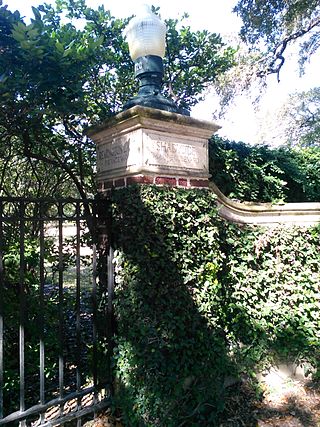
Shadyside is a private, walled subdivision of 16 houses in Houston, Texas. In 2012 Terrence McCoy of the Houston Press said that Shadyside has a "sense of exclusivity, or as Heritage Texas Properties puts it, 'mystique,'" which caused many prominent figures from Houston to settle in Shadyside and continue doing so for a period of almost 100 years.

The Sam Houston Monument is an outdoor bronze sculpture of Sam Houston by Enrico Cerracchio, installed at the northwest corner of Houston's Hermann Park, in the U.S. state of Texas. The work is administered by the City of Houston's Municipal Arts Commission.

McGovern Centennial Gardens is a collection of gardens in Hermann Park, in Houston, Texas, United States.

Houston's Hermann Park: A Century of Community is a 2014 book by Barrie Scardino Bradley, published by the Texas A&M University Press. It discusses Hermann Park in Houston, Texas. The book is a part of the John Lindsey Series in Arts and the Humanities. The book, commissioned by the Hermann Park Conservancy, was scheduled for a release on December 18, 2013. Stephen Fox, an architectural historian; and Doreen Stoller, a conservancy director, wrote the foreword and afterword, respectively. It was released to celebrate the park's centennial anniversary.

Emancipation Park and Emancipation Community Center are located at 3018 Emancipation Ave in the Third Ward area of Houston. It is the oldest park in Houston, and the oldest in Texas. In portions of the Jim Crow period it was the sole public park in the area available to African-Americans.

Brays Bayou is a slow-moving river in Harris County, Texas. A major tributary of Buffalo Bayou, the Brays flows for 31 miles (50 km) from the western edge of the county, south of Barker Reservoir along the border with Fort Bend County, east to its convergence with the Buffalo at Harrisburg. Nearly all of the river is located within the city of Houston; it is a defining geographic feature of many neighborhoods and districts, including Meyerland, Braeswood Place, the Texas Medical Center, and Riverside Terrace.


